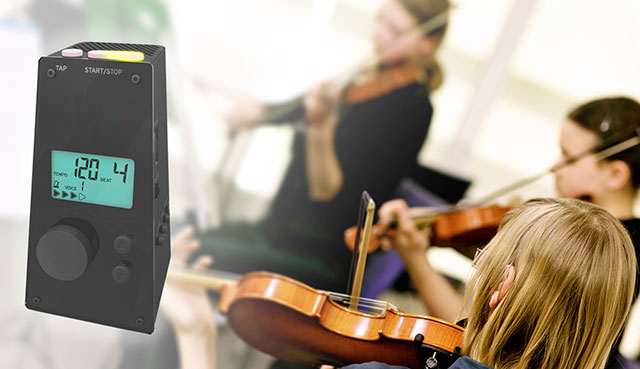 Maztr's free online Metronome
allows you to set the right tempo for your music practice. You can experiment with various settings to get the sound you want or use finer control of
the beat with subdivisions.
Maztr's free online Metronome
allows you to set the right tempo for your music practice. You can experiment with various settings to get the sound you want or use finer control of
the beat with subdivisions.
To get started, simply choose your settings then click the  button below. You can adjust
tempo, beat and subdivisons on the fly while the metronome is playing. It also allows you to choose from nearly 30 different sounds as the metronome
tone. See below for more detailed instructions.
button below. You can adjust
tempo, beat and subdivisons on the fly while the metronome is playing. It also allows you to choose from nearly 30 different sounds as the metronome
tone. See below for more detailed instructions.
We have many more free tools for your audio files. Click here to check them out.
A metronome is a valuable tool for musicians of all levels, providing a consistent tempo to ensure accurate timing and rhythm. Using a metronome helps you develop a strong internal sense of timing, which is crucial for playing in sync with other musicians and maintaining the intended pace of a piece of music.
It can also help improve your technical skills by allowing practice at slower speeds, enabling you to gradually increase the tempo as your proficiency improves. In addition, a metronome can help you identify and correct timing issues, which leads to more precise and confident performances. Overall, using a metronome during your practice routines can enhance your musical accuracy significantly, leading to improved performance quality.
To use a metronome effectively, consider the following key strategies:
These strategies can help you maximize the benefits of a metronome, leading to more precise timing, improved rhythmic accuracy and overall better musicianship.
Tempo refers to the speed or pace at which a piece of music is played. It's usually measured in beats per minute (BPM), indicating the number of beats in one minute. A higher BPM means a faster tempo, while a lower BPM indicates a slower tempo.
It's a crucial aspect of a musical composition, affecting the overall feel, energy and mood of the piece. Tempo can range from very slow (largo or adagio) to very fast (presto or prestissimo), with various gradations in between (andante, moderato, allegro, etc.).
Composers and performers use tempo markings to convey the desired speed and expression, ensuring the music is played as intended. Adjusting the tempo can significantly change the character of a piece, making it a vital element of musical interpretation and expression.
Subdivisions break down the main beats of a measure into smaller, evenly spaced units. This concept helps musicians understand and play complex rhythms more accurately. For instance, in a 4/4 time signature, each beat can be subdivided into two (eighth notes), three (triplets), four (sixteenth notes) or more parts.
They are essential for maintaining precise timing, especially in faster passages or intricate rhythms. Practicing with subdivisions improves a musician's rhythmic precision and fluency, allowing for greater control over timing and more expressive playing. Understanding and using subdivisions is fundamental for both solo and ensemble performances, ensuring cohesive and synchronized music-making.